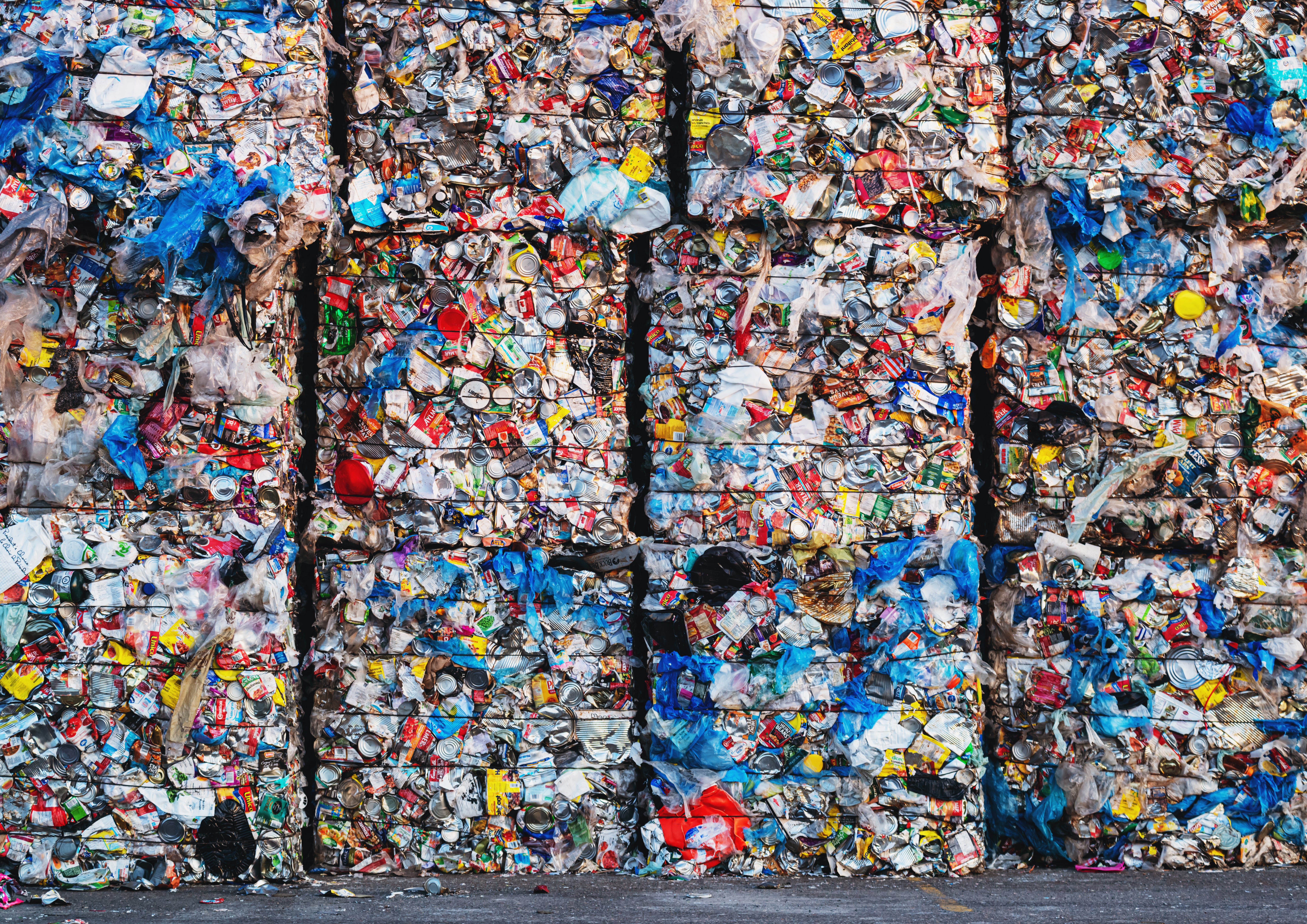Pioneering Change: How Canada's Single-Use Plastic Ban Reshapes Promotional Products
The Canadian government's recent ban on single-use plastics has sparked a significant transformation within the promotional products industry, paving the way for a more sustainable and environmentally conscious approach

The Canadian government's recent ban on single-use plastics has sparked a significant transformation within the promotional products industry, paving the way for a more sustainable and environmentally conscious approach.
With a growing emphasis on reducing packaging waste, businesses are actively seeking reusable alternatives, leading to a surge in demand for eco-friendly promotional products.
This article delves into the profound impact of Canada's ban on single-use plastics, exploring its implications on the promotional products landscape. We will delve into the prohibition itself, examining its scope and implications, while also highlighting strategic alternatives and product options that can help companies maintain their competitive edge.
Furthermore, we will emphasize the pivotal role of integrating sustainable practices into promotional product strategies, empowering businesses to proactively adapt and stay at the forefront of evolving consumer preferences and environmental concerns.

Understanding Canada's Plastic Ban
With a phased approach to implementation, the ban on single-use plastics in Canada has set the stage for a sweeping shift in the way promotional products are utilized, painting an evocative picture of a cleaner, greener future.
Impact assessments have been conducted to determine the environmental, economic, and social effects of the ban and the corresponding regulations. The Government of Canada has responded with a list of prohibitions and exemptions to provide businesses with sufficient time to transition away from single-use plastics.
The industry has responded to the plastic ban with innovative solutions designed to reduce plastic waste while promoting sustainability and eco conscious consumer behavior. Reusable straws, cutlery, and utensils have replaced plastic straws, plastic bags, plastic cutlery, a plastic product like grocery bags, and plastic items, while bamboo stir sticks and wooden cutlery have been introduced to the market. Non-woven totes are now more commonplace, as are stainless-steel and reusable food storage containers. Promo companies have recognized the demand for branded eco-friendly solutions to single-use plastics and have begun to offer more sustainable options such as organic cotton totes, stainless-steel straws, and food storage bags.
The shift away from single use plastics presents an opportunity for the promotional products industry to engage with companies and customers in a meaningful way. Establishing a strong partnership with organizations and businesses to help them switch to more sustainable promotional items can lead to increased brand recognition, greater customer loyalty, and improved customer experiences.
The plastic ban has also had an impact on the pricing and availability of certain promotional products. The shortage of wood pulp used to make paper and cardboard may lead to increased prices and shortages of toilet paper. The Government of Canada has responded by providing incentives for businesses that want to have a lower carbon footprint or less impact on biodiversity saving the world less from million tonnes of plastic waste. Disincentives can also be given to those that do not. By taking action to reduce plastic waste, the promotional products industry can contribute to a cleaner, greener future.
Adapting Promotional Product Strategies
As the end of the year approaches, promotional product companies must adjust their strategies to accommodate Canada's imminent ban on single-use plastics, a move that is sure to upend the industry with its ironic twist of progress.
Companies can look to collaborative partnerships to develop solutions that meet consumer needs while reducing the environmental impact of their products. This could include developing marketing campaigns that focus on reusable products and supply chain management that is mindful of the impact that plastic has on the environment.
Consumer behavior is also key in this process. By offering incentives for sustainable products, companies can encourage customers to choose the greener options. This could be as simple as offering discounts for buying reusable straws over single-use plastic ones.
Companies can also look to create innovative products to meet the needs of their customers. For example, Mohawk Paper has developed paper products made from cellulose from agricultural waste and other plants instead of wood pulp.
The ban on single-use plastics presents an opportunity for the promotional product industry to take the lead in creating sustainable products. By partnering with organizations such as Canopy, a non-profit environmental organization, companies can ensure that their products are truly sustainable. They can also provide incentives to businesses that are looking to reduce their carbon footprint and provide disincentives to those that are not.
Additionally, companies can look to right-sized packaging and refillable containers as solutions to reduce plastic waste.
Overall, the ban on single-use plastics will greatly impact the promotional product industry. Companies must ensure that their products are sustainable and reduce their environmental impact. This includes collaborating with other organizations, encouraging sustainable consumer behavior, and utilizing innovative solutions such as right-sized packaging and refillable containers. Through this, the industry can play a key role in the fight against plastic pollution.

Exploring Alternative Product Options
The promotional product industry can explore alternative product options to accommodate the upcoming ban on single-use plastics in Canada. Eco-friendly materials, such as cellulose from agricultural waste and hemp, can be used to create pulp for paper products. By utilizing alternative materials, manufacturers can reduce their environmental impacts and create products that meet consumer preferences. Additionally, manufacturing processes can be adjusted to reduce energy consumption and waste. This can help to minimize cost considerations for companies trying to meet the ban's requirements.
Wooden stir sticks, reusable utensils, and reusable food storage bags are some of the alternatives to single-use plastics prohibitions regulations. Wooden stir sticks can be produced with a generous imprint area and branded pouches can be used for utensils. Reusable food storage bags are a great alternative to plastic or Styrofoam clamshell containers. Eco friendly checkout bags have been made to reuse in cooperation with single-use plastic ban, such as single-use plastic flexible straw containing problematic plastic manufactured items, single-use plastic bags, single-use plastic cutlery, plastic grocery bags among others.
The government of Canada has also taken steps to reduce plastic waste by establishing regulations that require certain plastic packaging to contain at least 50% recycled content and rules for labeling recyclable and compostable plastics. To hold plastic producers accountable, a plastic registry is being developed by the government. Canada is also a founding member of the High Ambition Coalition to End Plastic Pollution and is working with countries and stakeholders globally to develop a legally-binding treaty to end plastic pollution.
With the implementation of the regulations, businesses in Canada, such as the promotional products Canada industry, have been required to adapt their practices to ensure compliance. They were able to replace single-use plastic straws, single-use plastic checkout bags, single-use plastic ring carriers, single-use plastic foodservice ware, single-use plastic items, single-use plastic stir sticks, and other single use products, and focuses more on eco friendly promotional products to help achieve zero plastic waste by 2030. These regulations have prompted the promotional products Canada industry to prioritize sustainability and eco-friendly solutions, leading to the development of innovative and environmentally conscious merchandise options across Canada and helping the plastic pollution in the environment as statistics Canada shown improvements compared to Canada in 2019 for plastic waste and pollution as plastic waste generated in Canada have been worse and affects health Canada.
Furthermore, the implementation of these regulations has fostered a more transparent and accountable business environment within the promotional products Canada industry. Companies are now expected to provide detailed information about the sourcing, manufacturing processes, and materials used in their products. This means the ban on the manufacture of plastic products to prevent waste or total plastic waste generated as the amount of plastic pollution made from problematic plastics will help the environment and climate change Canada has been trying to achieve as federal ban or national ban on plastics economy for 20 or more single-use plastic or single-use products reduce the quantity of plastic pollution.
The ban on single-use plastics is an important step towards reducing plastic waste and protecting our environment. It is up to the promotional product industry to explore alternative product options that are eco-friendly, meet consumer preferences, and are cost-effective. By utilizing alternative materials and adjusting manufacturing processes, the promotional product industry can make a positive contribution to the global effort to reduce plastic pollution.
Incorporating Sustainable Practices
To help combat plastic pollution, the promotional product industry must incorporate sustainable practices to create eco-friendly alternatives that meet consumer preferences. Sustainable sourcing is a key factor in this effort, as the industry must ensure that materials used to create promotional products are sourced ethically and responsibly.
Eco-friendly materials such as bamboo, jute, and organic cotton are gaining popularity in the promotional product industry. These materials are sustainable and biodegradable, reducing the carbon footprint of promotional products.
Recycling initiatives are also becoming more popular in the promotional product industry. Companies are using recycled materials, such as PET plastic, to create promotional products. This decreases the amount of plastic waste and reduces the carbon footprint of the products or systems. Additionally, companies are implementing ways to reduce their packaging and offer refillable containers, which also helps to reduce plastic waste recycled in Canada.
Preserving biodiversity is also important for the promotional product industry. Companies must ensure that their supply chains are not contributing to the destruction of forests or other ecosystems, and they must be transparent about their sourcing practices. Canopy is a non-profit organization that partners with global brands to advise them on sustainable supply chains that don't rely on resources from endangered or old-growth forests.
Innovations in the paper industry are also helping to reduce the impact of promotional products on the environment. Companies are using cellulose from agricultural waste and other plants to make pulp, and Mohawk Paper has developed a paper made from imported hemp from Spain.
Governments can provide incentives for businesses that want to have a lower carbon footprint or less impact on biodiversity, while disincentives can be given to those that don't. By implementing sustainable practices and utilizing eco-friendly materials, the promotional product industry can help reduce plastic pollution and protect biodiversity.

Staying Ahead of the Curve
Innovation and sustainability are becoming increasingly important for companies in the promotional product industry to stay ahead of the curve and remain competitive. With Canada's ban on single-use plastics, promotional product companies are now faced with the challenge of finding plastic alternatives that are still attractive to consumers while minimizing their environmental impact such as hydrocarbons or an oxo-degradable plastic. This is especially important given the growing consumer awareness of the environmental impact of their purchases as statistics show how much the world consumes as 15.5 billion plastic grocery bags, reusable plastic cutlery, impacts of plastic eliminated single-use plastic bags in the assessment of plastic pollution in Canada.
In order to meet these marketing challenges, companies must stay up to date with industry trends and understand consumer behavior for single-use items as products may contain non-conventional plastic to prevent plastic pollution and provide single-use plastics sold in Canada as the prohibition on sale comes on circular plastics economy for single-use non-plastic products. Moreover, they must be aware of the environmental impact of their supply chains, from the sourcing of raw materials to the production and delivery of their products. By understanding these trends, companies can identify opportunities for innovation and create new products that are both aesthetically appealing and environmentally conscious.
One example of such an innovation is the use of cellulose from agricultural waste and other plants to create pulp for paper products. By using alternative sources such as imported hemp from Spain, companies can create paper products that are more sustainable than those made from wood pulp. Furthermore, governments can provide incentives for businesses that want to have a lower carbon footprint or less impact on biodiversity.
The promotional product industry must continue to find innovative and sustainable solutions to remain competitive. Companies must stay informed of industry trends and consumer behavior, and strive to reduce their environmental impact. By doing so, they can create products that are not only aesthetically appealing but also help to create a more sustainable world.

Conclusion
In conclusion, Canada's single-use plastic ban has had a profound impact on the promotional products industry, leading to a significant reshaping of its practices. The ban, aimed at reducing the environmental harm caused by plastic waste, has forced businesses and marketers to seek alternative, sustainable options for promotional merchandise. This shift has not only promoted eco-consciousness but has also fostered innovation and creativity within the industry, as companies explore new materials and designs that align with the principles of sustainability. Canada's proactive approach in implementing this ban has set a commendable example for other nations, demonstrating that it is possible to strike a balance between economic growth and environmental preservation.
Furthermore, the single-use plastic ban has encouraged a broader cultural shift in consumer behavior, promoting a heightened awareness of the environmental impact of everyday items, including promotional products. Consumers are increasingly valuing eco-friendly merchandise, prompting businesses to adapt and offer sustainable alternatives. As a result, the promotional products industry is undergoing a transformation, with a greater emphasis on reusable, recyclable, and biodegradable materials. This shift not only aligns with consumer preferences but also presents an opportunity for companies to showcase their commitment to sustainability and corporate social responsibility. By embracing this change, businesses can not only reduce their ecological footprint but also build stronger connections with environmentally conscious customers who value brands that share their values.
By adapting their promotional product strategies, exploring alternative product options, and incorporating sustainable practices, companies can stay ahead of the curve and make a lasting impact in the fight against plastic pollution. This is an opportunity for businesses to showcase their commitment to sustainability and social responsibility, while also remaining competitive in an ever-changing market. Juxtaposing the need for environmental action with the potential for increased competitiveness, businesses can create a powerful platform for change.
